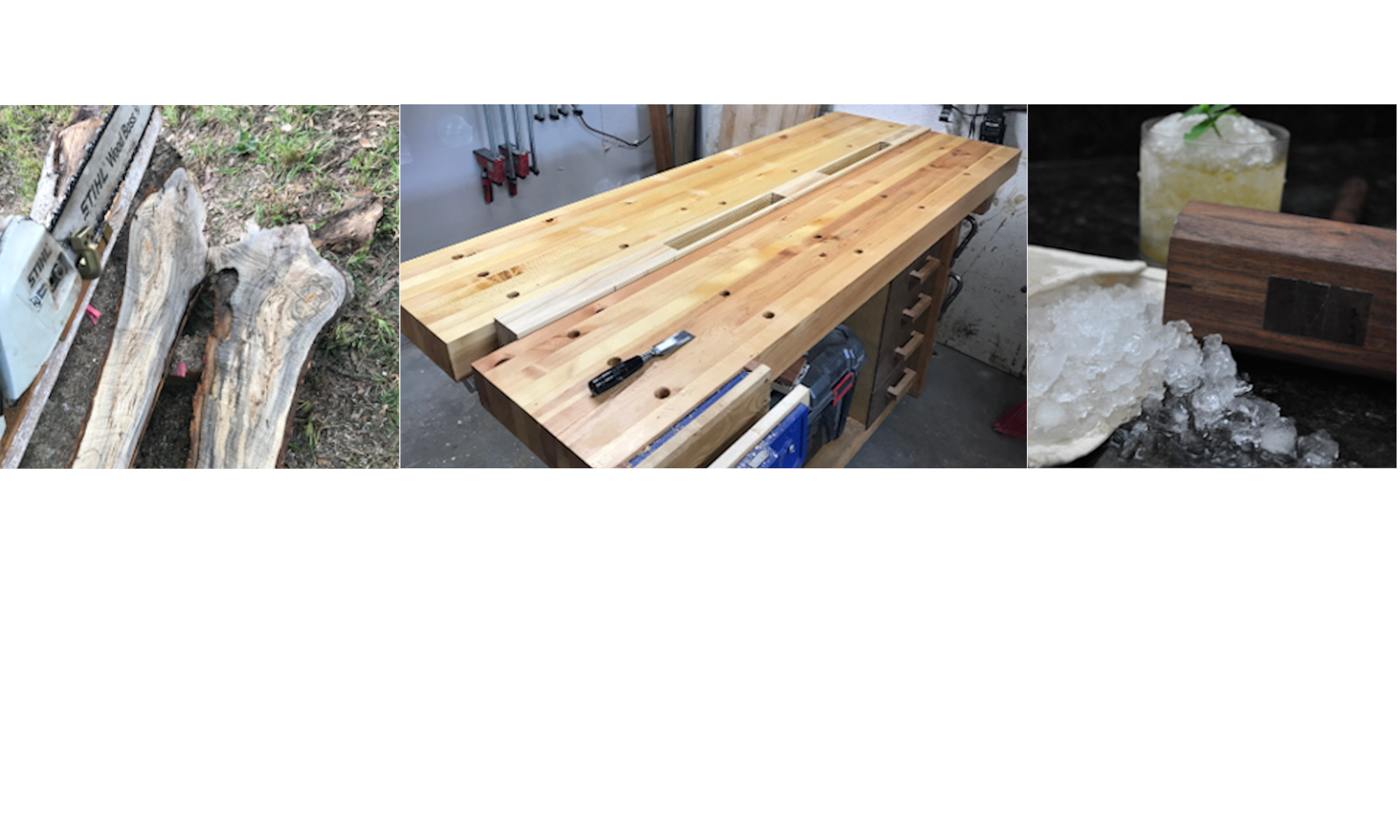Strip Planking the Sport Grandy
The hull of the contemporary boat is cold molded, consisting of multiple layers. The first of which is cedar strips 1 1/8” tall x 3/8” thick. The edges are left square sided, other options when strip planking include beveled or bead and cove edges which would be appropriate on a boat where the planking is visible (cedar strip canoe for example). For a cold molded hull the strip planking is not visible, as such, the additional space where the planks meet will be filled with glue. However, we still need to think about strip placement and how they will be tapered. It is advantageous to taper long planks and minimize the number of short planks. Planks should fall along at least 3 molds so they follow the fairness of the hull more readily. The process starts out with a master plank that sits nicely amidship on the boat. Then planking can proceed above and below. This helps plan out where the tapers will be located. The planks are held in place temporarily with finish nails at each station while the epoxy, applied to the edges is allowed to cure. In between stations needs to be as level as possible, tape, screws and blocking are used. The more the planks are even the less that will need to be faired and filled later.





Lining out Lapstrake Planking
For the traditional boat the backbone is fastened together with bronze bolts and screws. Sica flex, a flexible marine adhesive and modern convenience is used in place of traditional bedding compound. This helps with watertightness on a small boat such as this. Some tune up of the rabbet is required at the joints of the various pieces of the backbone.
Before we can install the garboard (the first plank located next to keel) the sizing and location of all of the planks needs to be determined. This process is called lining out and is literally determining the lines of the boat. For this particular boat battens are cut at 3/4” representing the planking overlap, a typical attribute of a lapstrake style boat. First a batten is placed along the sheer line and is adjusted for fairness. There are 8 planks per side and we would like each of them (except for the garboard) to be equal width at each station. First we establish the width of the garboard by taking the girth at each station and dividing by 8 planks. We then add 1 inch so we know our garboard will be about 1” wider than the remaining planks at each station. Now we can determine the width of the remaining 7 planks at each station. We used a method called diminishing scale, where the girth measurements are held along a scale with 7 lines diminishing into the same point. This allows us to quickly “tick strip” the girths and find widths with no measuring. The battens are installed, this is the point where you can start to see the boat’s appearance. It is also your opportunity to fix any thing that looks awry or unfair. Batten locations are marked on the molds for future use.



Marsh Cat gets paint and varnish
It’s been painted and looks pretty sharp in person. When we started school the hull was complete but there was much to do to get paint applied. The first step was to coat the brightwork (wood left as wood). This meant three coats of epoxy and three coats of marine varnish. Now we can paint the hull, which is done with a mono urethane paint and primer. The primer coat brings out some of the remaining imperfections and is a perfect time correct them. The mono urethane viscosity (when properly thinned) allows for high quality results using the rolling and tipping method. My interpretation of the roll and tip method is that you roll with a roller and follow with a brush while still wet. Using a high quality paint brush removes the roll texture and the paint lets the brush strokes disappear. This paint cures hard, meaning it is appropriate for stiff substrate like a cold molded hull. This finish would not be good for a live wood hull and repairing a small area can be problematic. The deck of the boat also received a non skid coating consisting of small glass beads sprinkled on while the paint is wet and sealed in with another layer of paint. This showed me that a paint job of this quality can be achieved with a little patience and A LOT of tape.





